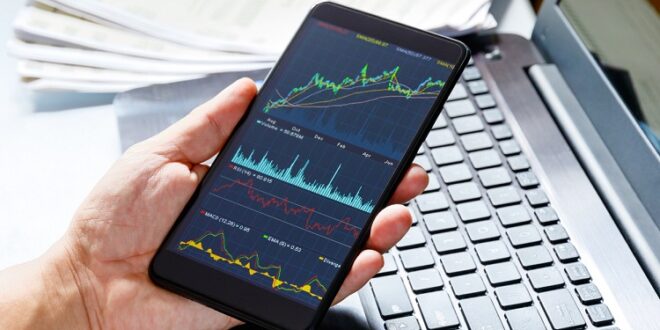Assume you’re purchasing a stock for 10 USD. However, you discover new binary options brokers that inform you of an interesting offer: you may purchase it now for 10 USD or deposit a token sum of 1 USD and acquire the right to purchase it at 10 USD in a month, even if the commodity’s value rises during that time. However, that small sum is non-refundable!
You recognize that the stock has a good chance of crossing 11 USD, and hence you can at least break even. Because you only must pay 1 USD now, you can put the rest of the money towards something else for a month. You wait a month before checking the stock price.
You now have the option of buying the stock from the dealer or not, depending on the asset value. Of course, this is an understatement, but this is the essence of options trading. Options are derivatives, which means their price depends on something else, most commonly stocks, in the world of trading. An option’s price is inextricably related to the underlying stock’s price.
Stock Trading Vs. Options Trading
There’s a good chance you’re wondering why we even have options trading if it’s just another way to trade. Here are a few things that distinguish it from stock trading.
- Unlike stocks, the options contract has an age limit. Depending on the restrictions and the type of Options you are using, the expiration might range from weeks to months to years. On the other hand, stocks do not have a set date when they expire.
- Options, unlike stocks, acquire their value from something else, which is why they are classified as derivatives.
- Options are not quantifiable in the same way that stocks are.
- Unlike stockholders, option owners have no rights (voting or dividends) in a firm.
Options Terminology
Strike Price
The Strike Price is the price at which the contract’s fundamental equities can be freely traded. The Strike Price for a Call Option means the price at which the stock can be purchased (on or before its expiry). The Strike Price for Put Options pertains to the price at which the sellers can execute their ability to sell the underlying equities in options trading.
Premium
The Options premium is the price you must pay to acquire an Option because the Options have no underlying value. The premium is decided by a number of factors, including the price of the underlying stock, market volatility, and the number of days until the Option expires. One of the most crucial aspects of options trading is deciding on the premium.
Underlying Asset
The underlying asset in trading options can be stocks, futures, indexes, commodities, or currencies. The underlying asset determines the price of Options. For this article, the underlying asset will be referred to as stock. The holder of a stock option has the option to buy or sell the shares at a defined price and date. When it comes to Stock in Options Trading, it’s all about the base value or stocks.
Expiration Date
All stock options in options trading have an expiry date. The expiration date is also the last day that the Options holder can execute their right to buy or sell the Options in their possession. The lifespan of options in options trading can range from weeks to months or even years, depending on the market and laws.
Options Style
In most options trading markets, there are two main types of options used.
- Options in the United States can be exercised at any moment before their expiration date.
- European Options that can only be executed on the day of their expiration.
Moneyness (ITM, OTM & ATM)
Before you begin trading Stock Options, you must first grasp the concept of Options Moneyness. Several options trading tactics revolve around an option’s moneyness. The link between the market price of an Option and the sale value of the underlying Stocks is defined by this term. Below, we’ll go through each term in further depth.
Option in-the-money
When the underlying asset value is higher than the strike price, the option is called a call. When the underlying asset value is lower than the strike price, a put option is used.
Option out-of-the-money
When the underlying asset price goes down than the strike price, the option is called a call. When the underlying asset price has gone up than the strike price, a put option is used.
Option at-the-money
When the strike price and the underlying stock price are the same.
Types of Options
There are just two types of options in the serious sense: Call and Put. We’ll get a better grasp of them.
Call Option
A Call Option is a financial instrument that allows you to purchase an underlying stock on or before its expiry date. When you purchase a Call Option, you pay a premium to the seller in exchange for the right (but not the duty) to purchase the underlying stock at a specific price (strike price).
Buying a call option indicates that you are positive on the market and expect the underlying stock’s price to rise. For you to benefit, the stock’s price must rise above the strike price plus the cost of the call option you bought before or at the time of its termination.
Put Option
On the other hand, a Put Option is a contract that allows you to sell an underlying asset on or before its expiry date. Buying a Put Option indicates that you are bearish on the marketplace and expect the underlying stock’s price to fall.
Conclusion
This article would be a suitable place to start if you’re fascinated by options trading. If you want to continue learning on your own, there is a wealth of knowledge available on the web. It all starts with the fundamental vocabulary and concepts you’ll need to trade Options. This is only a small part of the world of options trading. To advance, one must learn to construct various strategies employing statistical measures in futures and options trading.
 HammBurg Be informed with latest news, reviews, entertainment, lifestyle tips, and much more.
HammBurg Be informed with latest news, reviews, entertainment, lifestyle tips, and much more.




